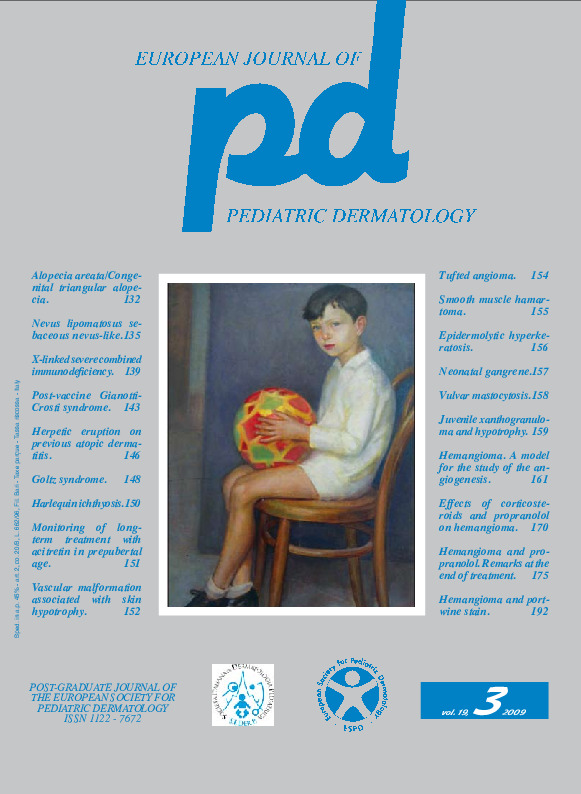Neonatal gangrene.
Downloads
How to Cite
Laforgia N., Garofalo L. 2009. Neonatal gangrene. Eur. J. Pediat. Dermatol. 19 (3): 157.
pp. 157
Abstract
Born full term by Cesarean section to healthy parents, after 2 previous spontaneous abortions. Her maternal grandmother had multiple thrombophlebitis episodes. At birth he presented cutis marmorata-like lesions on the right foot and a few hours later on the vertex (Fig. 3). 6 hours later the forefoot got black (Fig. 1, 2) and he was hospitalized in Neonatology Unit. Due to clonic spasms of the left arm, EEG was performed, showing spike waves of high voltage at right. He started gardenal 20 mg/kg. D-dimers were 16,500 μg/L (n.v. <200), protein C 28 U/ml (n.v. 67-140) and protein S 53 U/ml (n.v. 62-145). The clotting factors were normal in his parents. Color Doppler ultrasonography showed normal vascularity of the foot arch. Brain MRI showed focal vasculitis and hemorrhage (Fig. 4), explaining the neurological signs. We diagnosed peripheral gangrene of thrombotic origin, favored by deficiency of inhibitory factors of clotting.Keywords
Neonatal gangrene

